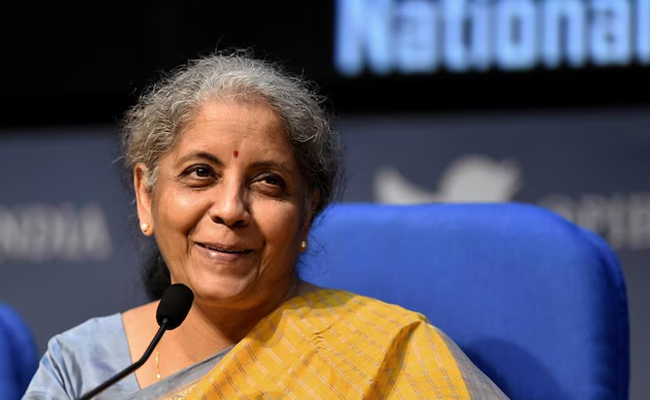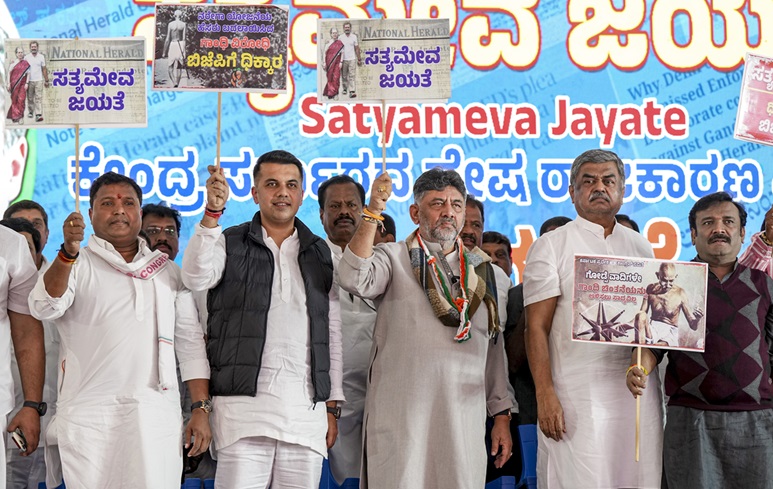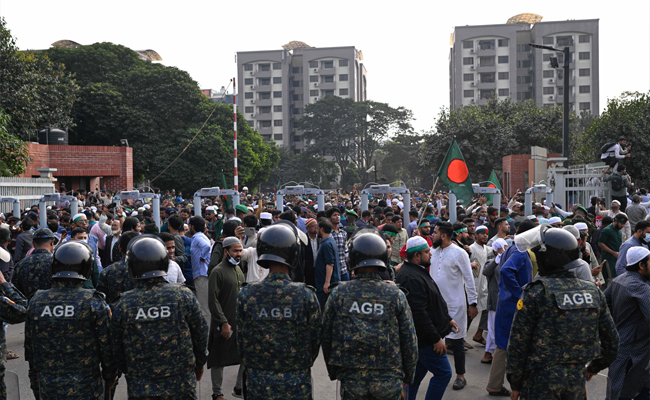New Delhi (PTI): A Delhi court on Monday reserved its order on a plea of the National Investigation Agency seeking custody of 26/11 Mumbai attacks accused Tahawwur Hussain Rana for 12 more days.
Rana was produced before special NIA judge Chander Jit Singh on expiry of his 18-day NIA custody amid tight security and with his face covered.
The judge is likely to pronounce order shortly.
Senior advocate Dayan Krishnan and special public prosecutor Narender Mann are likely to represented the National Investigation Agency in an in chamber proceeding.
Advocate Piyush Sachdeva from Delhi Legal Services Authority is representing Rana.
The court remanded Rana to NIA custody for 18 days.
In its order, the judge directed the NIA to conduct medical examination of Rana every 24 hours, and allow him to meet his lawyer every alternate day.
The judge allowed Rana to use only a "soft-tip pen" and meet his lawyer in the presence of the NIA officials, who would be out of an audible distance.
During the arguments, the NIA said Rana's custody was required to piece together the full scope of the conspiracy, and submitted he was required to be taken to various locations for retracing the events that took place 17 years ago.
Rana, a close associate of 26/11 main conspirator David Coleman Headley alias Daood Gilani, a US citizen, was brought to India after the US Supreme Court on April 4 dismissed his review plea against his extradition to India.
On November 26, 2008, a group of 10 Pakistani terrorists went on a rampage, carrying out a coordinated attack on a railway station, two luxury hotels and a Jewish centre, after they sneaked into India's financial capital using the sea route in the Arabian Sea.
As many as 166 people were killed in the nearly 60-hour assault.
Let the Truth be known. If you read VB and like VB, please be a VB Supporter and Help us deliver the Truth to one and all.
Kalaburagi: The Kalyana Karnataka edition of the Kannada daily Vartha Bharati was formally launched on Saturday at a programme held at Dr S M Pandit Rangamandir in Kalaburagi. The event also marked the release of the newspaper’s twenty-third annual special issue, a compilation of selected editorials, and the Kalyana Karnataka special supplement.
The programme was inaugurated by Karnataka Legislative Assembly Speaker U T Khader. The Kalyana Karnataka edition of Vartha Bharati was unveiled by Siddharth Varadarajan, Editor-in-Chief of The Wire.
The twenty-third annual special issue was released by multilingual actor Prakash Raj. The book compiling selected editorials of Vartha Bharati was released by B R Patil, Vice-Chairperson of the State Policy and Planning Commission and MLA from Aland. The Kalyana Karnataka special supplement was released by Rahim Khan, Minister for Municipal Administration and Haj.
ALSO READ: Kalaburagi: ‘Vartha Bharati’ Kalyana Karnataka edition launched
Chairperson of the State Waqf Board and Sajjada Nashin of the Khwaja Bande Nawaz Dargah, Hazrat Syed Mohammed Ali Al Husseini, and Kalaburagi South MLA Allamaprabhu Patil were present as chief guests.
Among the special invitees on the dais were Koraneshwara Mahaswamiji of the Tontadarya Anubhava Mantapa, Aland; Bishop Rev Fr Robert Miranda of Kalaburagi; Bhante Varajyothi of Anandur; social activist K Neela; farmers’ leader Chamarasa Mali Patil; DSS state convenor D G Sagar; and activist and singer Ambanna Arolikar.
Speaking on the occasion, Assembly Speaker U T Khader said Vartha Bharati had emerged as the voice of the weak and the voiceless in society and had earned the love, trust and confidence of people across the state. He said the newspaper had carved out a distinct identity in the media landscape and expressed happiness that it was now reaching the Kalyana Karnataka region. He added that Vartha Bharati had remained free from political pressures and inducements and expressed hope that it would continue to stand as a support system for the distressed.
B R Patil said running a newspaper in the present times was not easy, as the media sector had increasingly turned into an industry driven by profit. Amidst such challenges, he said, Vartha Bharati had maintained integrity, honesty and commitment throughout its twenty-three-year journey. He expressed confidence that the newspaper would continue on the same path. Referring to Kalaburagi, he noted that the region frequently witnessed agitations due to the large number of unresolved issues, and said Vartha Bharati should continue to bring the problems and suffering of the people to the attention of the government and contribute to finding solutions.





